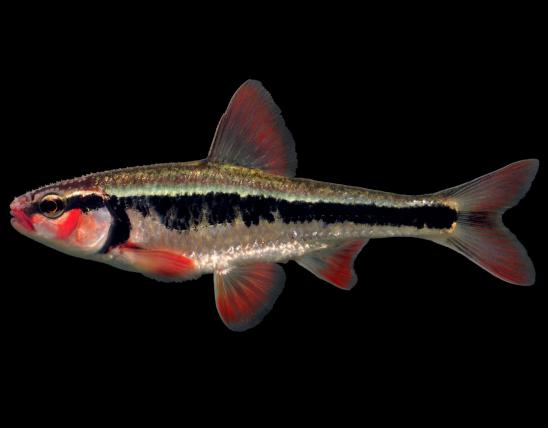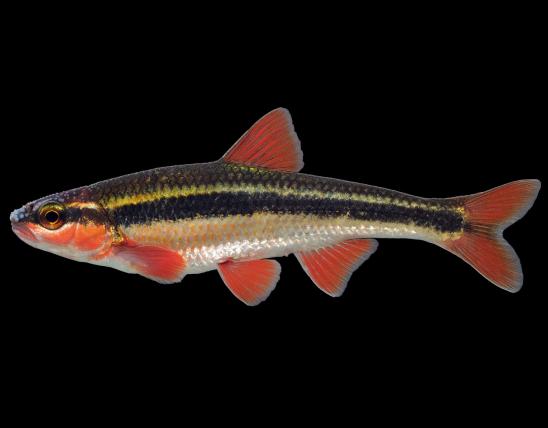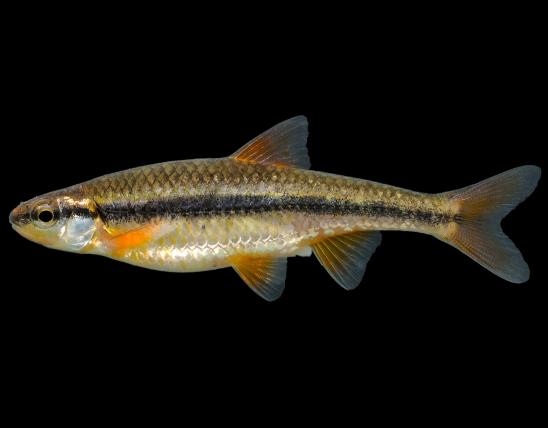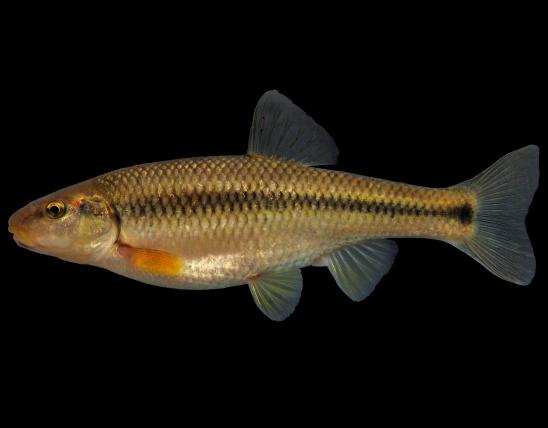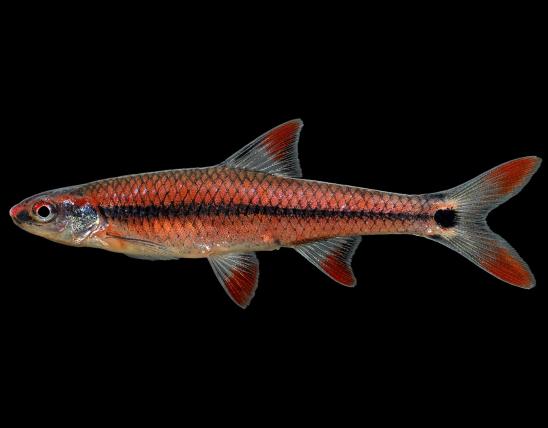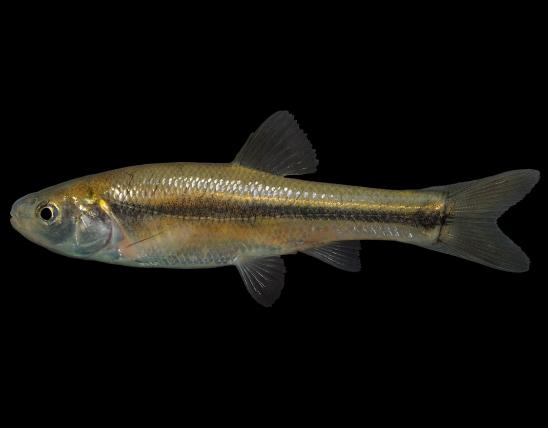
The southern redbelly dace is a slender minnow with two dusky stripes separated by a broad golden or yellowish stripe along the side. The back is olive brown with scattered dark spots; the belly is white. The scales are very small, barely visible to the naked eye. Breeding males are brilliant red on the undersurface of the head and body, with the lower fin and undersurface near the tail lemon yellow.
Total length: 1½ to 2¾ inches; maximum length 3 inches.

One of the characteristic fishes of the Ozarks. Also occurs in northeastern Missouri, where its range extends northward into the prairie region in hills bordering the upper Mississippi River.
Habitat and Conservation
Occurs in small creeks and spring branches of the Ozarks where there is permanent flow of cool, clear water and a gravelly or sandy bottom. This species often schools with other minnows such as stonerollers and creek chubs.
Food
Herbivorous, feeding primarily on algae and detritus with larval insects in lesser quantities.
Life Cycle
Individuals rarely live more than two years.
Human Connections
Dazzling breeding colors and a gentle disposition make the southern redbelly dace an excellent aquarium fish. Nongame fishes may be collected for aquarium purposes by the holder of a fishing permit, using techniques and in numbers specified for bait collecting in the Wildlife Code of Missouri.
What's a "dace"? It's a word that goes back to Middle English, where it became the name for a certain type of minnow, and then for just about any kind of small, darting minnow. It was derived from the word "dars" which was the Old French word for "dart."
Ecosystem Connections
Herbivorous minnows play an important role in aquatic ecosystems, as they provide a food-chain link between plants and larger aquatic predators.






























